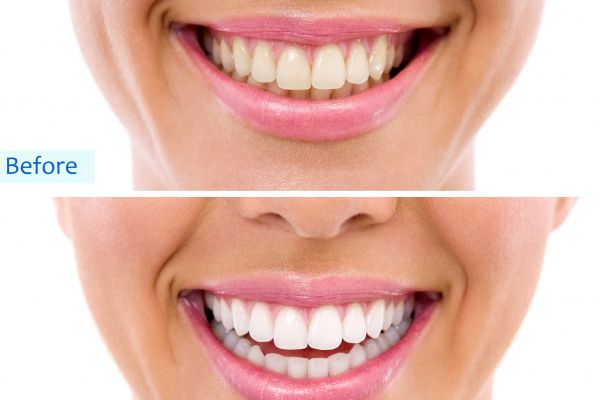DENTAL BRIDGES
A dental bridge is a false tooth that is used to fill the gap created by missing tooth or teeth. A gap between your teeth can be potentially dangerous to your dental health, as it can cause your teeth to shift resulting in a change in your bite that could be painful. Dental bridges help alleviate this problem by using the two surrounding teeth as anchors to hold a false tooth in the place where the gap is. Typically, porcelain crowns are placed over the surrounding teeth, and the false tooth, known as a pontic, is fused between them.
Types of dental bridges
There are three types of dental bridges that are commonly used today
- Traditional fixed bridge – This is the most common type of dental bridge, in which porcelain crowns are placed over the two surrounding teeth and used as anchors to hold the fale tooth in place. The false tooth is usually made of either porcelain fused to metal or ceramics.
- Cantilever bridge – A cantilever bridge is used when teeth are present on only one side of the gap. These are used typically in areas of your mouth that doesn’t experience an intense chewing load, such as your front teeth.
- Resin-bonded bridge – In a resin-bonded bridge, metal bands are bonded to the surrounding teeth with resin and used to hold a plastic false tooth in place. This type of bridge is typically used in areas of the mouth that undergo less stress, such as the front teeth
How it’s done
A minimum of two visits are required for placing a dental bridge. At the first visit, three important steps are completed. Firstly, the surrounding teeth are prepared to be fitted with a crown. This may including filing down the tooth so that the crown can fit over it. Secondly, an impression is taken of your teeth which will be sent to a laboratory to prepare the bridge and crown. Finally, the dentist fits your teeth with a temporary bridge to protect them while the bridge is prepared at the laboratory.
At the second visit, the temporary bridge is removed and the new bridge received from the laboratory is fitted and adjusted. Multiple visits may be necessary to check and adjust the fit.
DENTAL BONDING
Dental Bonding is a restoration procedure in which a tooth-colored resin is bonded to a tooth and cured with ultraviolet light. Bonding is faster and cheaper than veneers or crowns, and can thus be a good option to make small cosmetic improvements to your teeth. Unlike veneers and crowns, bonding can be done within one office visit since nothing has to be custom made by a dental laboratory. Additionally, the procedure typically requires removing less the tooth enamel compared to veneers and crowns. However, since bonding typically doesn’t last as long as other forms of restoration and is less resistant to stains, it is used more often for small cosmetic touchups rather than major restorations.
How its done
First the dentist determines exactly what colour shade your teeth are to select a resin that will blend in naturally. Once this is done, the dentist will prepare the tooth so that the bonding material will adhere easier. This involves roughening the surface of the affected tooth and applying a liquid conditioner. Once this is complete, the dentist will apply the resin to the tooth, and cure it in place using an ultraviolet light. Finally, the dentist will apply the finishing touches by shaping and polishing the resin for a good fit.
DENTAL VENEERS
Dental veneers are thin custom made shells that cover the front surface of your tooth to improve their appearance. They are made of tooth colored materials and can be used to improve the color of teeth that have been worn down or stained. Alternatively, they can be used to improve the shape or size of the tooth.
Types of veneers
There are two types of veneers that are commonly used. Porcelain veneers are more durable, and resist stains better. The properties of the material also helps to create a very natural tooth look. Unlike porcelain veneers, composite resin veneers are not made in a laboratory, but instead directly applied to the teeth. They typically have a shorter life span, and are less expensive.
When should you consider dental veneers?
You talk to you dentist about dental veneers if
- Your teeth are stained or discolored teeth
- Your teeth are crooked or misshaped teeth
- Your teeth have spaces between them
- Your teeth are broken or chipped
How its done
Two visits to your dentist are typically required for porcelain veneers. At the first visit, three important steps are completed. Firstly, the your teeth is prepared to be fitted with a veneer, which will involve trimming a portion of the tooth so the veneer can be bonded on top. Secondly, an impression is taken of your tooth which will be sent to a laboratory to prepare the veneer. Finally, you may receive a temporary veneer depending on how much of your tooth structure was removed. This temporary veneer will protect your tooth while the permanent veneer is prepared at the laboratory.
At the second visit, the temporary veneer, if you received one, will be removed. Then, the new veneer received from the laboratory will be checked to see if it fits well. It’s best not to adjust porcelain veneers after they are bonded to your teeth, so any adjustments will be made beforehand. Once you and the dentist are satisfied with the look and feel of the veneer, it will be bonded to your tooth.
INLAYS & ONLAYS
Dental inlays and onlays are a more conservative approach to tooth restoration than full crowns. The are used to repair premolar and molar teeth that have mild to moderate tooth decay, or for cracked teeth where the damage does not warrant a dental crown. Porcelain, composite resin and sometimes gold are used to create inlays and onlays. Inlays refer to those procedures where the bonded material limited to the center of the tooth, while onlays refer to those procedures where the bonded material can extend further to one or more cusps of the tooth.
What are the benefits of inlays and onlays?
Natural look: Inlays and onlays have a natural tooth color that makes them virtually invisible compared to metal fillings.
Great fit: Inlays and onlys will not expand or contract based on temperature like metal fillings. Longevity: Inlays and onlays can last up to thirty years, longer than any other type of filling. Minimal tooth structure removed: Inlays and onlays require the minimal removal of a tooth’s surface, helping to preserve the maximum amount of healthy tooth structure while restoring decayed or damaged areas.
How it’s done
Typically, two visits are required for the placements of inlays and onlays. In the first visit, your dentist will take an impression of your tooth, which will be sent to a lab to create the permanent inlay or onlay. Before you leave, he will fit your tooth with a temporary inlay / onlay to keep the tooth protected between visits. During your second visit, the dentist will remove the temporary protective material and fit your tooth with the permanent inlay or onlay received from the lab.
PORCELAIN CROWNS
Compared to fillings which just cover a small portion of a tooth, a crown (or cap) encases the entire visible portion of a tooth. In effect, the crown acts as the tooth’s new outer surface. A dental crown is used when a tooth is broken or decayed to such an extent that fillings aren’t able to repair the problem. The crown is able to provide a protective shell around the damaged or decayed tooth to strengthen it, as well as to improve the appearance of the tooth. They can also help restore a tooth to it’s original shape and are used commonly for teeth that have been broken. While crowns come in different materials, the most common crowns typically have some mixture of porcelain in them to give them a look and feel similar to a natural tooth.
How it’s done
The first visit to your dentist involves reshaping the tooth and taking impressions to create the crown. Typically a portion of you tooth will have to be removed for the crown to fit properly. After the dentist reshapes your tooth, he will use a special material to create an impression of it. This impression will be sent to a dental laboratory to be made into a permanent crown. Before sending you home, the dentist will provide you with a temporary crown to cover your tooth in between visits.
When you return to you dentist, he will have received the permanent crown from the laboratory. He will remove the temporary crown and fit the new permanent one. Before cementing the permanent crown in place, he will ensure that it fits comfortably and matches the colour of your teeth.
TEETH WHITENING
Our teeth can discolour through the years as our enamel wears down. The wearing down of enamel allows dentin, a yellow color substance that makes the core of our teeth, to show through. This is what gives our teeth a yellowish tint. Teeth whitening helps restore teeth to a shiny white colour through the use of bleach.
Teeth whitening methods
The best method, involves the use of take home whitening kits. These professional whitening kits are purchased from your doctor for use at home. The strength of the gel used in these kits is lower than that used for in-office bleaching, and thus the gel can be applied for longer periods of time. Usually the custom made trays are worn a couple hours a day or overnight for a few days or weeks depending on the product. The beauty about this system is that if specific teeth are darker than others, you can selectively whiten those teeth until they become the same shade as the rest of the teeth, at which time all of the teeth are whitened together. The other advantage of this system is that if patients wish to whiten their teeth in the future, additional whitening product can be purchased for a fraction of the cost since the bleaching trays can be used indefinitely (as long as they still fit).
We do not recommend in-office whitening for a few reasons. First and foremost is the risk for increased sensitivity, as the strength of the solution used is much higher than the at home solutions. Economically, the cost of in-office bleaching is about 3X that of professional at home kits. Finally, in-office bleaching does not offer predictable shade results and you may end up needing a second appointment to achieve the result you are wanting.

